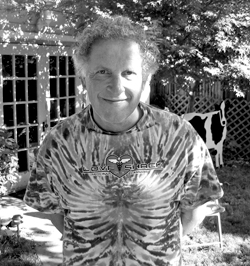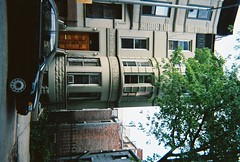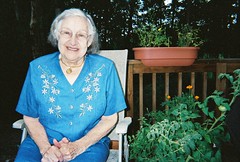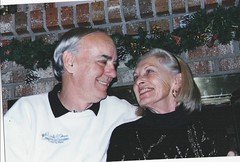I've also reproduced a press dispatch describing the feat. According to the article, "the record run, made in an exhibition match in Springfield last night, would be presented to the American Billiards congress for approval. Mosconi ... defeated Earl Bruney of Springfield, an amateur, 200-3 in his 200 point game, then continued on to his record run." There's a chapter devoted to Mosconi, Earl Bruney and the high run in The Hustler & The Champ.
Friday, April 30, 2010
Willie Mosconi's High Run: 526 in 1954
Ever wonder about Willie Mosconi's historic high run? The 526 balls pocketed consecutively by Mosconi remains the official record today, more than 50 years later. (There have been a few other players who claimed to have pocketed more, but those records have never been authenticated.) I've reproduced above the affidavit attesting to Mosconi's record, which was set in 1954. You can find a copy of the affidavit and other Mosconi artifacts online at the Archives Center, at the National Museum of American History. Here's the link.
I've also reproduced a press dispatch describing the feat. According to the article, "the record run, made in an exhibition match in Springfield last night, would be presented to the American Billiards congress for approval. Mosconi ... defeated Earl Bruney of Springfield, an amateur, 200-3 in his 200 point game, then continued on to his record run." There's a chapter devoted to Mosconi, Earl Bruney and the high run in The Hustler & The Champ.
I've also reproduced a press dispatch describing the feat. According to the article, "the record run, made in an exhibition match in Springfield last night, would be presented to the American Billiards congress for approval. Mosconi ... defeated Earl Bruney of Springfield, an amateur, 200-3 in his 200 point game, then continued on to his record run." There's a chapter devoted to Mosconi, Earl Bruney and the high run in The Hustler & The Champ.
Monday, April 26, 2010
Remembering Bill "Weenie Beenie" Staton
I've collected here a few stories about Bill "Weenie Beenie" Staton, who was one of the sport's foremost promoters and players. The owner of Jack & Jill's Cue Clubs passed away on Feb. 18, 2006, at Grand Strand Regional Hospital near his home in Myrtle Beach, South Carolina. He was 77 at the time. (That's a picture of him at the top of this post, with his wife Norma Jean.) All these stories are from a separate blog that I'm about to close out. As this site is dedicated to PRESERVING pocket billiards history, I figured it made sense to repost these memories here.
The first story is from his daughter, Gwyn Staton, who wrote it to memorialize her father shortly after he passed away. You'll have to click through to see it and the other stories. If you want to learn more about Weenie Beenie, you can read an homage that I wrote about him for Billiards Digest by clicking here.
Thursday, April 22, 2010
Autographed copies of The Beard's Bank Pool Books -- get 'em while they last!
And speaking of instructional books: I've just been flipping through Freddy "The Beard" Bentivegna's two excellent books on banking. Both include great advice, plus wonderful anecdotes about some of my favorite pool players. His first book, "Banking With The Beard," includes a banking formula that incorporates the concepts of acquired english and cue ball english. It's 200 pages long. His second, "The GosPool of Bank Pool," also runs about 200 pages long -- but about half of it is devoted to colorful anecdotes. I found myself laughing out loud as I read about Minnesota Fats, Eddie "The Knoxville Bear" Taylor, Cornbread Red and Harold Worst.
Freddy graciously has autographed copies of both books, and has allowed me to offer them here at $29.95 apiece, plus $5 shipping and handling. Also, as a sort of exchange program, Freddy is selling on his site autographed copies of my books, The Hustler & The Champ and Hustler Days.
You can find Freddy's website at www.bankingwiththebeard.com. There's also plenty more detail there about Freddy (a 2005 inductee into the Bank Pool Hall of Fame), plus some great vintage pool videos.
-- R.A. Dyer
To get your autographed copy of his book from my website, you'll have to shoot me an email with your email address. (Click on my name below to call up my email address). Also be prepared to write a check, as I'm not really set up here to sell things so I don't have the appropriate credit card technology. If you want either of Freddy's books, act quick. I've only got a few copies.
-- R.A. Dyer
Friday, April 16, 2010
Author Robert Byrne at work
Ever wonder how Bob Byrne got those little pictures into his instructional books? During my recent interview with the author, Bob explained that he actually had to cut and paste each one by hand. He used tape and rubber cement and an actual pair of scissors. Very old school. I've included a picture of Bob hard at work, above.
Byrne, as you may already know, is the author of his Standard Book of Pool & Billiards, Complete Book of Pool Shots and most recently, Behold My Shorts. He's our sport's most successful living author -- a testament to his lively writing and ability to clearly explain sometimes difficult concepts.
One thing I enjoy most about his instructional books are the diagrams. They always include a line drawing of a guy's back and arm, shooting pool. Bob tells me he was the model for the shooter, who in the images often appears to have changed his shirt. "The table diagram and the shooter were drawn by a professional artist and what I do is put the balls on using a plastic template, add lettering if needed, and draw the ball paths with triangles and French curves," he explains.
Bob further explains in an interview you can find elsewhere on this site that he had a professional photographer perch atop a step ladder to capture original images for his books. To read that Q&A, keep scrolling down or just click here. And you can see more photos of the templates by navigating through the jump break by clicking on the "read more" link.
-- R.A. Dyer
Byrne, as you may already know, is the author of his Standard Book of Pool & Billiards, Complete Book of Pool Shots and most recently, Behold My Shorts. He's our sport's most successful living author -- a testament to his lively writing and ability to clearly explain sometimes difficult concepts.
One thing I enjoy most about his instructional books are the diagrams. They always include a line drawing of a guy's back and arm, shooting pool. Bob tells me he was the model for the shooter, who in the images often appears to have changed his shirt. "The table diagram and the shooter were drawn by a professional artist and what I do is put the balls on using a plastic template, add lettering if needed, and draw the ball paths with triangles and French curves," he explains.
Bob further explains in an interview you can find elsewhere on this site that he had a professional photographer perch atop a step ladder to capture original images for his books. To read that Q&A, keep scrolling down or just click here. And you can see more photos of the templates by navigating through the jump break by clicking on the "read more" link.
-- R.A. Dyer
Thursday, April 15, 2010
PoolSynergy 6: One on One with Robert Byrne
PoolSynergy is a collaborative effort between online pool writers, each of whom agree to post essays on a single theme. This month's edition is hosted by Fast Mikie McCafferty and his Diary of a Pool Shooter blog. Check it out to find more essays.
For our PoolSynergy topic this month we've been asked to write an essay about "The Most Important Thing about Pool." I have to confess this was something of a stumper for me. Keep your head down when you shoot? Remember to follow through? No crying in nine-ball? I had no idea. So instead of inventing some weighty bit of nonsense and then pawning it off as wisdom, I took the coward's way out. I called Robert Byrne.

As the author of seven popular books on pool -- including his incredible Standard Book on Pool & Billiards -- Bob Byrne enjoys a much-deserved reputation as our sport's foremost educator. His Standard Book has sold more than 400,000 copies since its original publication in 1978 and his Complete Book of Pool Shots has sold more than 80,000. Either one or the other has consistently outranked all other pool books on Amazon's list of top sellers. Byrne also has authored one my favorite pool biographies, McGoorty: A Pool Room Hustler, and has produced some of the sport's most popular
 instructional videos. His latest book, Behold my Shorts, is a hilarious collection of essays and newspaper columns.
instructional videos. His latest book, Behold my Shorts, is a hilarious collection of essays and newspaper columns.I figured who better to ask about pool's most important thing than pool's number one teacher. Straightaway I called the Hall of Famer at his Iowa home, which he shares with his wife Cynthia Nelms and shi-tzu Betty Boop. I was all ready to pose my question when I remembered that it was just about to be Bob's birthday. He turns 80 on May 22. And so before you know it, we're talking about that, and not about his instructional advice. Bob tells me he feels great at 80, although "growing old is like getting pushed toward the precipice by an irresistible bulldozer." And so that's where we began, with a discussion of pool and aging, and not the most important thing.
I've reproduced here part of that Q & A. But just so you know, Bob is a native of Dubuque and attended both Iowa State and the University of Colorado. He authored a humor column at the first university, and edited a humor publication at the second. He graduated in 1954 with a degree in civil engineering and his first job out of school was as a reporter for a construction industry trade magazine in San Francisco. The magazine eventually folded, which contributed to Bob's decision to become a full-time writer of books.
By why pool? Bob says he was a winner of tournaments in college, and then continued playing after moving to California. There he rubbed elbows with national champions. He came upon the idea of writing an instructional book upon realizing there wasn't many other books available at the time that offered sound advice.
He said he learned much about the technical aspects of the game from his friend Bob Jewett. "The two of us were always talking about the physics of the game so when I had an offer to do the book, I was well prepared to go into the technical aspects," explains Bob. "Also, as a former magazine editor, I knew what I wanted the book to look like. I didn't want the explanations running onto the next page. I hired a graphic artist to do the diagrams of the table and the drawings of me. He did them from the top of a step ladder. Instead of doing arrows, I had a player who would be aiming the shot."
The Standard Book and The Complete Book of Pool Shots "is what keeps me in pancakes," says Bob. But it was the excellent writing in those books and his sound advice that has earned him the respect of fans and colleagues. In 2001 the industry bestowed upon Bob Byrne pool's highest honor: he was inducted into the Billiard Congress Hall of Fame for meritorious service.
So, Bob and I spoke about that honor, and his books, and his long history observing the sport, and his birthday. Here's some of the rest of it:
Q: Do you have any general thoughts about turning 80?
A: I'm lucky in that I don't look 80 and I don't feel 80. I'm in good health and still thinking about future projects, some of which involve billiard books and DVDs, which are on hold at the moment because of the lousy economy. Appropriate words to describe me given my age are 'peppy' and 'spry.' I ran 78 in straight pool when I was 78 and a year ago matched my lifetime high run of 14 in three-cushion. My instructional books and DVDs do very well, so I'm happy.
Q. But what about pool in general? Why has the sport gone to hell in a handbasket?
A. Most but not all of the negative aspects of the game are related to the severe economic slump. There is no men's tour. The women's tour has been reduced. Only a few pool players in the word make a decent living at the game, and to do it they have to practically live on the road.
The industry in general, which depends a lot on table sales, is in the severe slump because new home construction is way below normal. Business is down at most pool rooms and many rooms have closed in the last couple of years. The print magazines have seen discouraging losses in advertising income and circulation. There is no live TV coverage of pool.
When there is a tournament on TV it is almost always 9-ball. Great games like straight pool are never seen on TV because the long runs become tedious, with too many easy shots. Even 9-ball on 4.5 x 9 tables is too easy--top players almost never miss a shot they try to make, which does not make for compelling television for the average non-playing viewer.
Q. Is there hope for the future?
A. Maybe for televised matches 5x10 tables should be used to provide more of a test. Snooker is still popular in Great Britain, partly because the 6x12 tables are a formidable challenge and look awesome on television. Making a long diagonal straight-in shot on a 6x12 table with tight pockets and you deserve appla
 use; such shots on a pool table are so routine that they aren't interesting.
use; such shots on a pool table are so routine that they aren't interesting.As a geezer, I can be expected to feel that things were better in the good old days. Pool rooms when I was young were more interesting because you could play or watch pool, snooker, or three-cushion, and the pool games being played weren't always 9-ball and 8-ball. Those two games have driven out great games like straight pool and rotation from the average public room. The billiard world has seen many ups and downs, booms and slumps. I look forward to the next boom, but I don't think it will come soon.
Q. How is that you can write so authoritatively about the sport?
A. A year and a half ago when I was 78 years old I ran 78 in straight pool. I doubt if I will ever run my age again. Six months ago I ran 14 in three-cushion, which ties my lifetime high run that I made 50 years ago. While those feats are nothing for professional players, they help me write about the game because I play well enough to understand what the top players are doing. I have a pool table at home, not a billiard table, and I spent a lot of time on it when dreaming up and testing the shots in Byrne's Complete Book of Pool Shots.
Three-cushion is my best game by far, and decades ago I won my share of tournaments on the West Coast. National champions I have beaten in tournament play include Frank Torres, Harry Sims, Eddie Robin, and Bud Harris. In 1999 I won the National Amateur in Louisville, KY and the same year I won the National Senior in Chicago, in both cases averaging .800. Those are the last significant competitions that I've won. My skills have slipped quite a bit as I've reached advanced geezerhood, but I'm still competitive.
(As I mentioned before) much of my understanding of the physics of the game I learned from Bob Jewett, like the fact a spinning ball does not curve when it rolls down the table. To make a ball curve you have to strike it a downward blow with an elevated cue, otherwise no curve. To prove it, spin a ball with your fingers or with a sidespin stop shot. When the ball is spinning in place like a top, knock in slowly down the table by throwing another ball against it. You'll see that the spinning ball travels in a straight line.
Bob and I continued talking about pool for a long while more, and during the course of the conversation, he mentioned his website, www.byrne.org, where you can find plenty of useful tips. For instance, pool tip number 2:
"With ball in hand and a cluster that must be broken, consider playing safe in a way that breaks up the cluster. It may be possible to drive a ball into the cluster and at the same time snooker your opponent."
Is this the most important thing about pool? Probably not. But I had so much fun talking, I forgot to ask him about the most important thing. And as this tip comes to us from America's foremost pool writer, it's certainly worth remembering.
-- R.A. Dyer
Friday, April 9, 2010
Childhood home of Minnesota Fats


At the upper left is a photograph of the apartment building where Minnesota Fats grew up. It's in upper Manhatten, the neighborhood of Washington Heights. I managed to track down its location and take this photo during a trip to New York City in the summer of 2005. I knocked on the door but nobody was home. I used the research from that trip in The Hustler & The Champ, which also describes Fats' rivalry with Willie Mosconi. Some years later I made contact with one of Fats' nephews, Doug Corwin (shown at upper right), whose mother Bertha Wanderone lived with Fats at this home. Doug also provided me some really cool childhood photos of Fats, which you can find by clicking through this Untold Stories column.
-- R.A. Dyer
Thursday, April 8, 2010
Ursitti remembers Flora Mosconi
 Pool historian Charlie Ursitti pens a lovely rememberence of "Auntie Flo" on the Pool & Billiard Magazine blog. Auntie Flo was none other than Flora Mosconi, wife of the late Willie Mosconi. Flora passed away March 25 in hospice care in New Jersey.
Pool historian Charlie Ursitti pens a lovely rememberence of "Auntie Flo" on the Pool & Billiard Magazine blog. Auntie Flo was none other than Flora Mosconi, wife of the late Willie Mosconi. Flora passed away March 25 in hospice care in New Jersey.Writes Charlie: "I first met Auntie Flo back in 1977 while preparing for the ABC's Wide World of Sports telecast of the 'Great Pool Shootout' between Willie and Minnesota Fats. I was going back and forth between New York City and Haddon Heights, New Jersey where the Mosconis lived, bringing contracts and formats for Willie to approve.
"We had talked on the phone many times, but this would be the first time I would meet her in person. She prepared a big meal, for myself, my girlfriend, Willie, her daughter Gloria, her two her nieces, Nancy and Loretta, and herself. Auntie Flo had asked me what I wanted for dinner, and we settled on roast beef, baked potatoes, corn on the cob and New Jersey beefsteak tomatoes that were in season. She reminded me of my own mother the way she had prepared the meal and the warm greeting she gave me."
As promoter for the Great Shoot-Out, Ursitti had a long association with the Mosconis. He has also conducted a meticilous examination of Willie's records, which I reference in a column this month about Mosconi and Ralph Greenleaf. You can check it out in this month's Billiards Digest.
-- R.A. Dyer
Wednesday, April 7, 2010
Billiards Digest: Shamos on Mark Twain
 Just reading Mike Shamos' fascinating piece about American literary giant Mark Twain, who also happened to be a great fan of billiards. Twain died 100 years ago this month, on April 21, 1910. Shamos' story, which is included in this month's issue of Billiards Digest, includes a cool image of the Huckleberry Fin author at the billiard table and another of him at the billiard room he had installed in his Hartford home. There's also various Twain-related billiards anecdotes. I've included above a public domain picture of Twain playing pool with Louise Paine.
Just reading Mike Shamos' fascinating piece about American literary giant Mark Twain, who also happened to be a great fan of billiards. Twain died 100 years ago this month, on April 21, 1910. Shamos' story, which is included in this month's issue of Billiards Digest, includes a cool image of the Huckleberry Fin author at the billiard table and another of him at the billiard room he had installed in his Hartford home. There's also various Twain-related billiards anecdotes. I've included above a public domain picture of Twain playing pool with Louise Paine.Shamos' Billiard Digest piece also makes note of Twain's first written reference to billiards. Appearing in "Innocents Abroad," published in 1869, it describes an experience in Paris:
"At eleven o'clock we alighted upon a sign which manifestly referred to billiards. Joy! We had played billiards in the Azores with balls that were not round, and on an ancient table that was very little smoother than brick pavement -- one of those wretched old things with dead cushions, and with patches in the faded cloth and invisible obstructions that made the balls describe the most astonishing and unsuspecting angles and perform feats in the way unlooked-for and almost impossible 'scratches.' They were perfectly bewildering."
-- R.A. Dyer
Subscribe to:
Posts (Atom)











